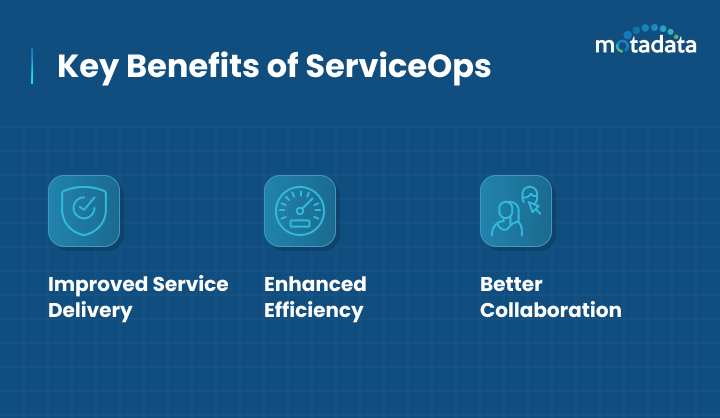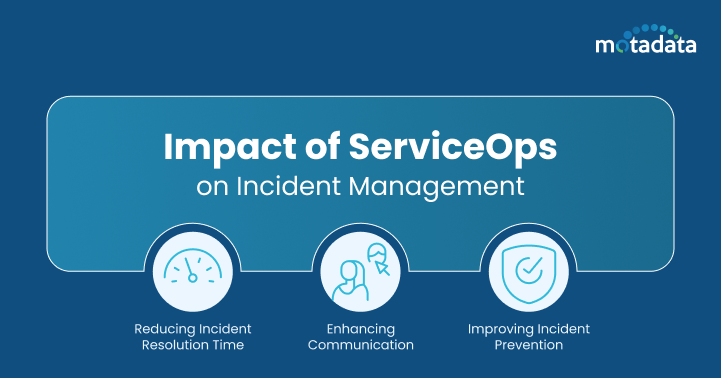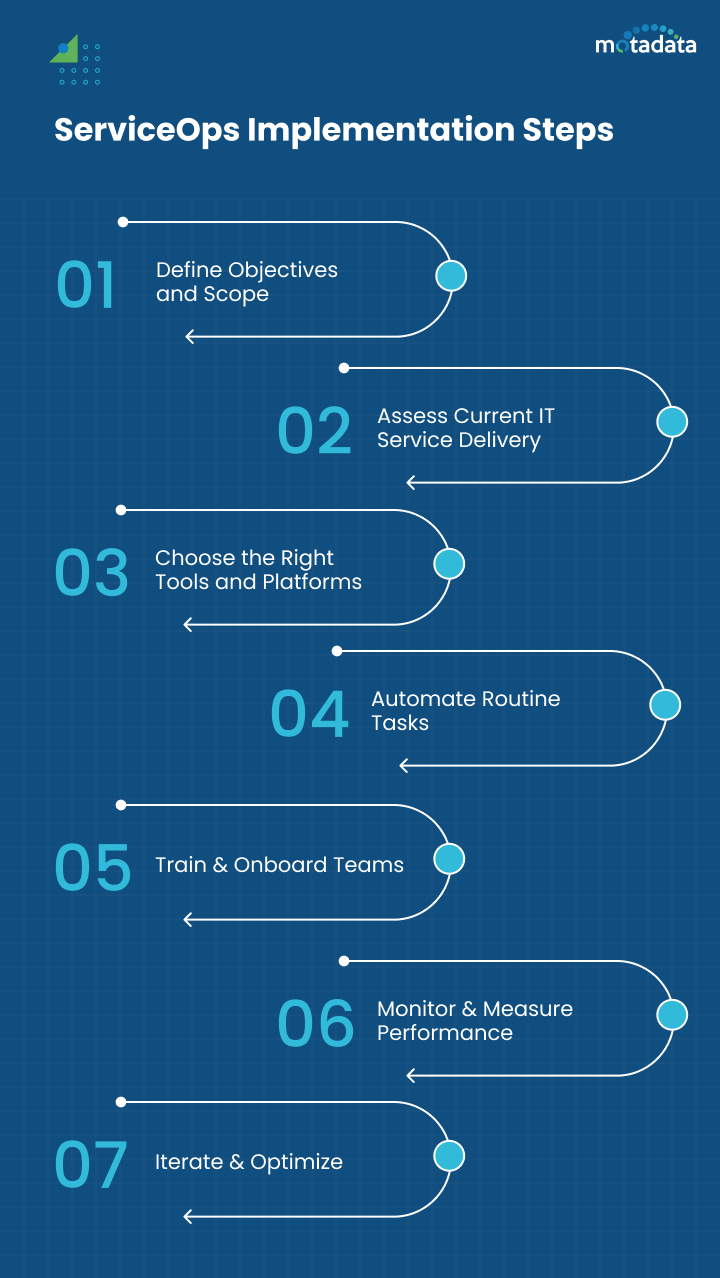Providing quick and effective IT services is paramount for organizational achievement in dynamic business operations. Technology development creates new obstacles for IT teams that must sustain service excellence and operational effectiveness standards. Recently developed ServiceOps implements a transformation of IT service management (ITSM) that surpasses all organizational needs.
ServiceOps combines service management methodologies with IT operational methodologies to optimize the delivery of efficient processes, which results in faster organizational value and enhanced performance. ServiceOps implements a strategic approach that delivers IT service while reducing system malfunctions and improving system performance and customer satisfaction.
This article investigates ServiceOps’ power to boost IT service delivery effectiveness, its operational mechanism, and advantageous elements, as well as why companies require it as an essential IT management foundation.
What is ServiceOps?
ServiceOps (Service Operations) is a strategic system that unites IT operations methods with IT service management (ITSM). The approach commits to optimizing operations, automating activities, and enhancing inter-team work to achieve unquestionable IT service collaboration. Advanced tools, automation, and data-driven insights provide ServiceOps with capabilities to make IT teams more responsive, efficient, and agile.
The main distinction between traditional IT operations lies in their system maintenance focus because ServiceOps unites these practices with service delivery functions to reduce IT-team/end-user operational differences. Web development receives better support, and users get improved service while technical problems are resolved more swiftly because of this implementation.
Key Benefits of ServiceOps
1. Improved Service Delivery
The main objective of ServiceOps is to enhance IT service delivery operations. Organizations can obtain faster service responses and more reliable outcomes through optimized procedures and by eliminating performance blockades. Machine automation tools help decrease human involvement, which causes speedier problem-solving while ensuring fewer errors occur in service delivery.
2. Enhanced Efficiency
ServiceOps automates repetitive tasks, thus enabling IT teams to concentrate on dealing with advanced issues. The system enhances operational performance by minimizing operational expenses while speeding up information technology service delivery.
3. Better Collaboration
Implementing ServiceOps enhances teamwork between workers from development departments, operations teams, and service staff. Teams using a unified framework for IT service management strengthen their ability to respond instantly to developing issues while gaining time-scaled assistance to improve service performance.
ServiceOps vs. Traditional IT Service Management
Traditional ITSM
The standard approach in ITSM is to manage problems after customer issues surface. Traditional service delivery processes exist in this approach yet fail to synchronize appropriately with IT operations, which delays fixing user-related issues. The architecture enables minimal teamwork between different departments because of its segmented nature.
ServiceOps
ServiceOps operates proactively by linking IT operations to service delivery systems. The method uses automated systems with continuous surveillance to maintain teamwork, which detects problems ahead of their appearance. The emphasis rests on enhancing IT operational performance and quality of end-user experience.
How ServiceOps Improves IT Service Delivery
ServiceOps improves the delivery of IT services through its ability to integrate operations with service management guidelines. Here’s how:
Automation of Routine Tasks
ServiceOps automation handles IT tasks through ticket administration, system updating, and system tracking to minimize human labor while reducing mistakes. The implementation of automation lets IT personnel handle problems immediately without wasting effort on repetitive work.
Real-Time Monitoring
System and service monitoring systems help IT teams discover issues during their early stages of development. Preventure measures implemented through this system prevent operational disruption, resulting in continuous user experience.
Faster Issue Resolution
Combining optimized business processes and improved staff-to-staff resource sharing leads to faster problem resolution. Through its intelligent routing system, ServiceOps enables teams to deal with urgent incidents immediately.
Enhancing Operational Efficiency with ServiceOps
The fundamental principle of ServiceOps depends on operational efficiency. Here’s how it enhances efficiency:
Reducing Downtime
ServiceOps decreases system downtime through its proactive monitoring and automatic incident response capabilities. The availability of IT services at the appropriate times enhances productivity and creates content users.
Optimizing Resource Utilization
Combining process automation with improved collaboration makes ServiceOps optimize all available resources. IT teams focus on essential tasks because task maintenance occurs automatically.
Data-Driven Insights
The analytics platform in ServiceOps generates performance data to locate specific areas that need improvement. IT teams obtain strategic decisions for optimizing operations through analysis of performance metrics with trends.
The Impact of ServiceOps on Incident Management
The delivery of IT services strongly depends on incident management as a fundamental element. ServiceOps improves incident management by:
Reducing Incident Resolution Time
Fast incident resolution becomes possible through automated systems, intelligent routing features, and real-time team communication capabilities. Using ServiceOps, the organization can effectively match resources to tasks, thereby decreasing the number of incidents that need to be solved.
Improving Incident Prevention
Through system monitoring and performance analysis, ServiceOps enables organizations to detect potential issues to avoid incidents. The preventive measure enables the reduction of service interruptions.
Enhancing Communication
The cooperation between IT professionals requires effective exchange of information to control incidents. ServiceOps users can collaborate instantly to keep all teams focused during critical incident response periods.
ServiceOps Tools and Best Practices
Organizations execute ServiceOps through multiple tools and established practices, which include the following system:
IT Service Management (ITSM) Platforms
Many organizations adopt ServiceNow, Jira Service Management, and other ITSM platforms to improve service delivery and automate incident management procedures.
DevOps Tools
IT teams can automate deployments using Jenkins Kubernetes and Docker platforms to integrate development and operations processes.
Integrating ServiceOps with Other IT Frameworks
ServiceOps can be integrated with other IT frameworks such as ITIL (Information Technology Infrastructure Library), DevOps, and Agile to enhance IT service delivery further. By combining the best practices of these frameworks, organizations can achieve greater efficiency, flexibility, and responsiveness.
ServiceOps Challenges and Solutions
The IT framework ServiceOps can receive additional benefits through combined implementation with ITIL (Information Technology Infrastructure Library), DevOps, and Agile systems to boost IT service delivery. Organizations reach higher operational efficiency and agility levels by merging optimal practices from different frameworks.
ServiceOps Challenges and Solutions
Challenge: Resistance to Change
The majority of business entities encounter opposition during their adoption of new IT operational frameworks, including ServiceOps. Success at overcoming this obstacle requires organizations to utilize proper communication methods, workforce training programs, and demonstration of ServiceOps advantages.
Challenge: Complexity in Implementation
The implementation process of ServiceOps becomes complicated when organizations are large. The initial implementation requires a pilot project followed by continuous progress evaluation, necessitating an approach adjustment when necessary.
Solution: Use of Automation
The success of ServiceOps implementation depends on automation as its leading implementation enabler. Organizations achieve easier processes and decreased complexity through automated repetitive task management.
Future Trends in ServiceOps
ServiceOps possesses a promising outlook because emerging technologies and market trends redefine the delivery of IT services. The following trends deserve observation:
AI and Machine Learning
Artificial intelligence systems and machine learning tools continuously aid in incident prediction while delivering automated solutions and improving decision-making capabilities.
Integration with Cloud Services
Organizations’ shift toward cloud-based IT service delivery and operations drives ServiceOps to change its focus, bringing flexibility and expanded scalability.
Focus on User Experience
ServiceOps concentrates on improving user interaction through its operational efforts to supply IT platforms that fulfill end-user needs without sacrificing operational performance.
ServiceOps Implementation Steps
Implementing ServiceOps demands organizations to develop strategic plans and detailed execution procedures. ServiceOps implementation success requires organizations to follow these steps for their IT operation integration.
Define Objectives and Scope
Organizations need to establish their objectives as the initial requirement before starting ServiceOps implementation. Organizational objectives must be precise because they create an executive plan enabling successful implementation regardless of optimization or service enhancement targets.
Organizations need to decide which areas of the IT department will use ServiceOps or all operations under its purview.
Assess Current IT Service Delivery
Organizations need to determine their existing IT service delivery performance metrics. Organizations must examine their present-day IT service management processes tools, and workflows to uncover performance limitation points and system weaknesses. ServiceOps will make its most significant impact in areas that need improvement and targeted enhancements through proper assessment.
Choose the Right Tools and Platforms
Proper implementation of ServiceOps depends on selecting appropriate tools and platforms. ITSM tools, including ServiceNow, Jira Service Management, and other systems, can function with automation tools, monitoring platforms, and cloud infrastructure. Organizational needs determine the selection of tools that should improve the ServiceOps strategy.
Automate Routine Tasks
One fundamental principle of ServiceOps involves automated process execution for regular duties. Available tools should be used to automate repetitive IT tasks such as ticket routing, system monitoring, and issue resolution tasks. IT professionals can allocate their skills to strategic work because automation provides faster resolution times while preventing human errors.
Train and Onboard Teams
Introducing ServiceOps requires practical training for all members of IT departments to ensure successful implementation. All participants must thoroughly comprehend the mission statements and the instruments and processes. Ongoing training sessions must support teams that stay updated regarding new tools and best practices that evolve as the organization progresses.
Monitor and Measure Performance
After implementing ServiceOps, organizations must track performance using key performance indicators (KPIs), including service uptime, incident response time, and customer satisfaction. ServiceOps performance measurement ensures organizations can verify success and obtain direction for enhancing weak areas.
Iterate and Optimize
ServiceOps functions through continuous improvement since it does not operate as a standalone implementation. Organizations must use feedback data and performance assessments to develop improved IT processes to increase service quality. Organizations should optimize their operations through three main strategies: workflow improvements with automation tools and team role readjustments to reach their goals.
Conclusion
ServiceOps is a vital system that improves the delivery quality of IT services and operational performance levels. ServiceOps merges Service Management practices with IT operations to allow organizations to deliver excellent, dependable IT solutions that operate efficiently. ServiceOps enables IT services through automation and collaboration to help teams handle incidents rapidly and manage resources optimally, providing exceptional service experiences for end-users.
FAQs:
Implementing ServiceOps enhances IT service delivery processes and operational effectiveness, but DevOps centers around development and operational staff cooperation to accelerate software development cycles. ServiceOps serves as both broader and more service-oriented than its parallel solution.
Through automation in ServiceOps, routine tasks such as ticket management, incident resolution and monitoring operations become accelerated, leading to enhanced performance by streamlining processes, reducing resolution time, and preventing mistakes.
ServiceOps works as an operational solution for organizations of any size. Organizations with significant size need more potent tools and advanced processes to utilize ServiceOps efficiently.










